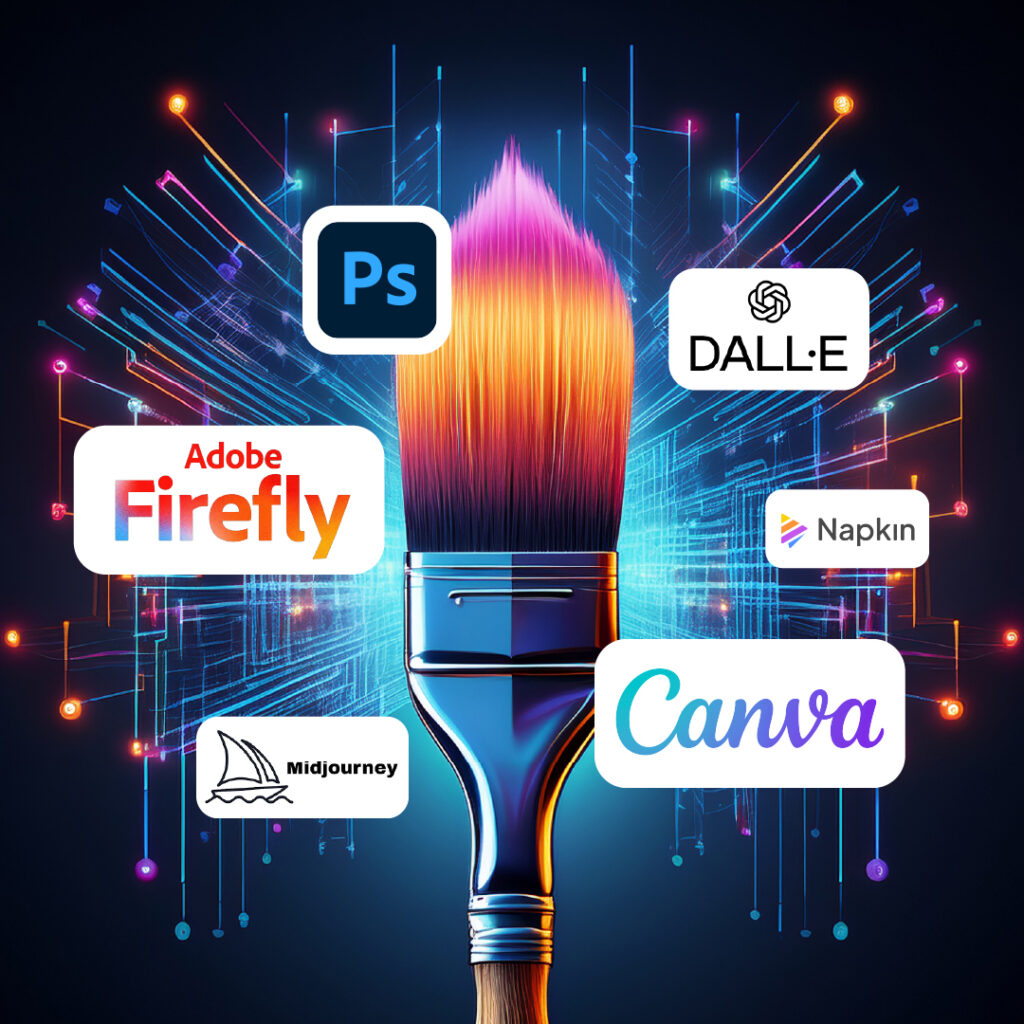Can AI and Creatives Be Friends?
2 Minute Read
By now, folks in the creative world have no doubt heard claims that sensationalize artificial intelligence as a threat to our work. AI certainly doesn’t come without pitfalls, but it’s here to stay. It’s our job as human users to make space for AI in our processes. Take a deep breath and discover how AI can be a reliable partner (not an enemy) in creativity.
First, we must understand that obviously, AI is many things, but it is not:
Overwhelming
Or, at least it shouldn’t be. Without truly understanding AI capabilities in the creative world, it’s easy to imagine it as a large threatening presence. We can combat this perspective by being intentional with the AI tools allowed into our concepts. We can dedicate AI for just a portion of creative output, to live alongside the rest of the human-made considerations that go into solving a design problem. It needs our directions, after all. We humans are in control of how we prompt, or “talk to” it. AI is a powerful vehicle, but it still needs a careful driver.
Emotional
That’s the human’s job. Empathy, ethics, and personal experience are some of our biggest advantages as living, breathing individuals. AI instead stands as a companion in functionality – another important component in creativity. Knowing this, we can use AI to produce practical, useful results that take us down another path, improve our workflows, and offer results that surprise us.
New
Sure, new AI tools are popping up all the time and it can seem like it’s hard to keep up. But the concept has been in the creative game for a while. For example, in Photoshop, artists have been using AI to magically fill in gaps or tweak faces in photos. For years, we’ve been benefiting from these tools making our tedious tasks quicker. This long-standing integration is proof of the gradual acceptance of AI in our digital art-making.
New advancements in AI offer amazing benefits to creatives. We can automate more repetitive tasks, such as image resizing and color correction, faster than ever before. Inviting AI into our brainstorming phase could pull us out of our comfort zone by revealing unforeseen color palettes, layouts, and font combinations. Animations, textures, and 3D models can be generated at the speed of just a few clicks, with higher-quality results.
At this point though, there are some downfalls to consider. There are ethical concerns with artwork ownership and attributions. Plus, with it producing large quantities of results, we need to evaluate the quality of AI work presented. Without the intervention of a human touch, the AI presence in artwork can sometimes be very detectable. It shouldn’t be relied on too heavily.
Ultimately, we must at least get to know AI and own how we adopt it into our methodologies. The more we understand it, the less threatening it becomes. I don’t believe creatives are being replaced by AI, but we should work side-by-side with it.

